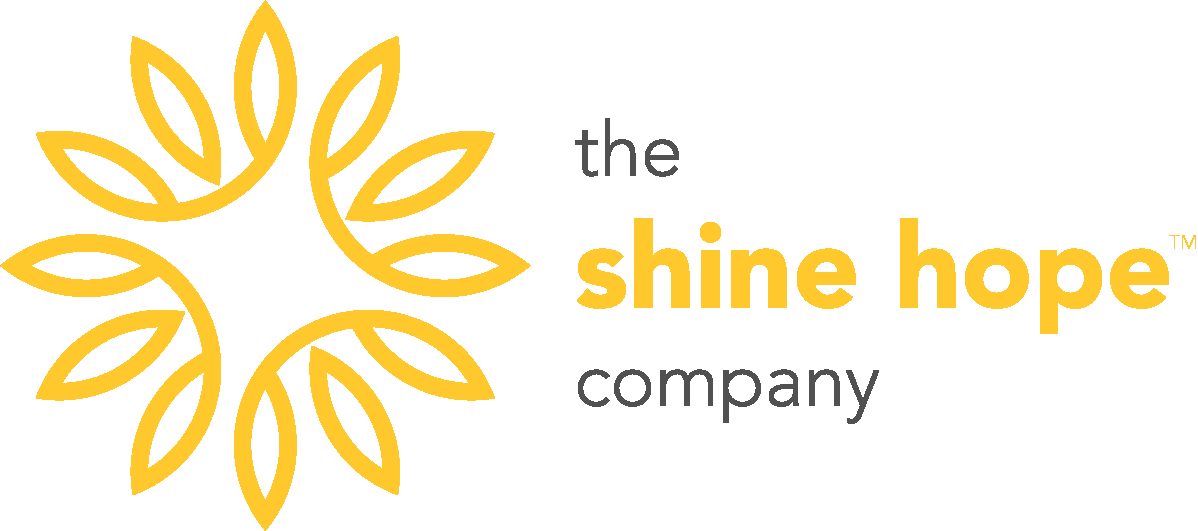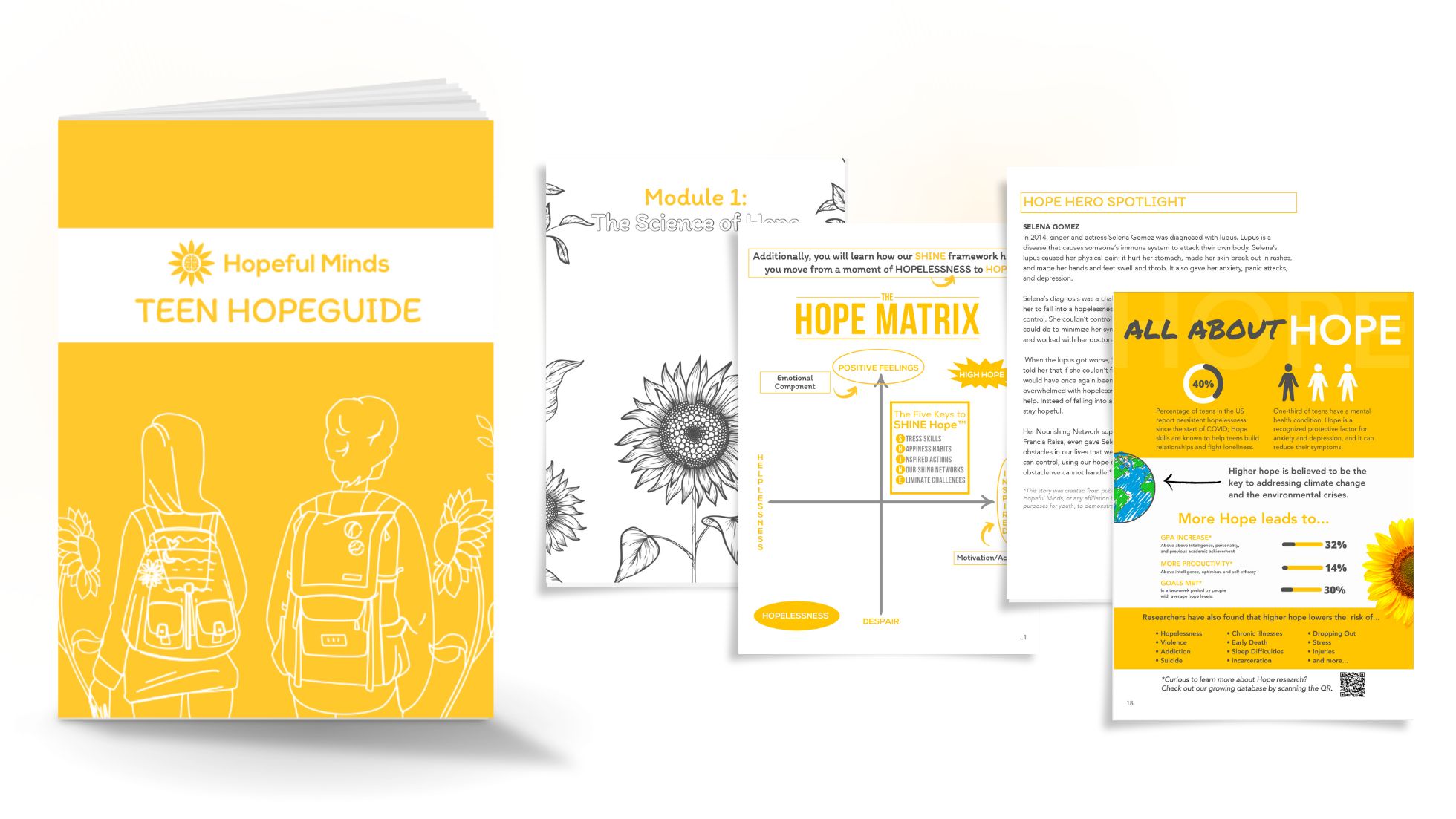Planting sunflowers is a way to spread the message of hope, as if you put up a Gardens of Hope sign with the website, people can then find the curriculum to learn more about the programs for ‘how’ to hope. Our program is available around the world, and gardens are a great way to share the message that Hope is Teachable.
Planting Sunflowers to Learn how to Shine Hope™
Say you find some tough ground you need to dig into to plant, you may get frustrated and give up. It is a good time to practice a Stress Skill like a 90-second pause or deep breathing, to calm down your stress response. Then try again! You may also notice when others get frustrated and teach them how to use this skill to navigate from their downstairs brain back upstairs.
Eating the sunflower seeds (if ok with your doctor) might be a good way for you to practice your Happiness Habits. Sunflower seeds are nutritious, high in choline and selenium, great for brain function and memory. You might also get some exercise planting gardens, and spend time in nature, two other Happiness Habits and great ways to release endorphins.
Planting gardens remind us to take Inspired Actions by setting specific goals for the garden. If we want a garden, we need to set a SMART goal about how many flowers, when and where we want the garden, and how we are going to grow the flowers. It is best if we write down the plan, chunk it down into actionable steps, think about obstacles and multiple ways we might overcome them, and check in with someone regularly to ensure progress.
We can cultivate our Nourishing Networks by planting gardens with others. That way, if we have challenges while planting, we can face them together and be more creative about overcoming them. And if we don’t live by the person we want to plant with, we can both decide to plant and check in regularly on the garden. It is also super fun to plan community gardens, or even fields of sunflowers, and all join together in learning and practicing skills to Shine Hope.
And finally, time to get serious about Eliminating Challenges. For example, if our sunflowers die and we fail for a season of planting, it is easy for us to think of ourselves as failures. Yet we aren’t failures, our process failed. So deconstruct the process. Did we under or over water? Did we plant at the wrong time of year? Was something wrong with the soil? Did we overwater? It is time to investigate, and instead of ruminating about the sunflowers start figuring out what we can do better to try again next year.
PLANTING SUNFLOWERS,GROWING HOPE.
Did You Know?
- The symbolism of the sunflower holds profound meaning. A sunflower seed begins its journey in darkness, mirroring our most hopeless states. It represents our potential for growth and improvement amid despair. Just as a seed cannot flourish alone, we, too, rely on our Hope Network to nurture our hope.
- The growth of a sunflower echoes our journey toward hope. It stretches roots deep into the ground, akin to our efforts to break free from despair using Stress Skills—meditation, deep breathing, and mindful pauses.
- As the sunflower emerges into the sunlight, it unfurls leaves to gather sunshine, needing water, nourishment, and care to flourish. Similarly, we cultivate positive feelings through Happiness Habits—long-term, healthy practices fostering more and more hope.
- Obstacles pepper the sunflower’s path; rocky soil and inadequate resources. Likewise, we face challenges. However, equipped with Stress Skills, Happiness Habits, Inspired Actions, Nourishing Networks, and skills to Eliminate Challenges, we navigate and conquer these hurdles.
- The sunflower’s purpose transcends its growth; it provides sustenance and joy. Similarly, we share hope with those around us, becoming beacons of optimism and joy.
- Our choice of the sunflower and its vibrant yellow hue isn’t arbitrary. It symbolizes our commitment to shine a positive light on hope, eradicating mental health stigma through proactive measures in prevention, research, and education. Yellow is the color of happiness and hope.
- Gardening is also very healthy for the mood, so we encourage community gardens. Eating sunflower seeds can be healthy for the brain, as they are rich in vital nutrients. It is also one of the only flowers that can be planted anywhere in the world, and we believe the ‘how’ to hope must be planted everywhere as well.
- It is also a method for nonprofits to raise funds for hope. You can sell the seeds, have gardens sponsored, sell products in retail, or create art for auctions. The ideas are endless!




































